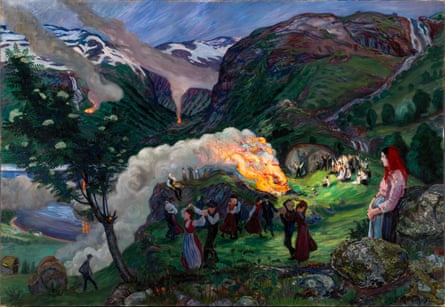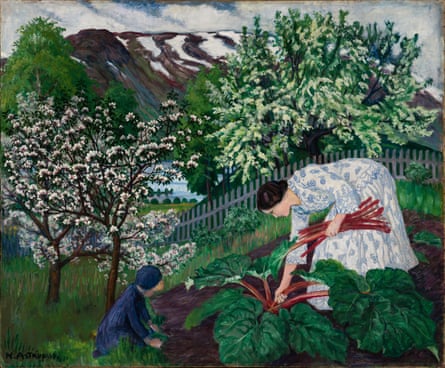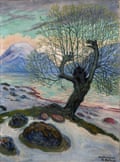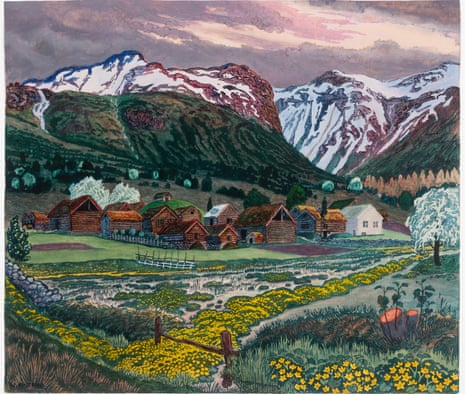Norway’s legendary modern artist who captured his country’s fantastically eerie landscapes is about to be celebrated. And no, it isn’t Edvard Munch.
It’s Nikolai Astrup – a legend in his own land, but barely known outside of it. In fact, the Dulwich Picture Gallery, in London, is putting on the first significant show of Astrup’s work outside Norway in the new year. Will it make him as famous as Munch, his contemporary?

It seems suspiciously as if the world only has room for one great Norwegian artist. Astrup was born in 1880 and died in 1928, while Munch was born in 1863 and died in 1944. It is impossible to avoid comparing the two, because both are expressionists who take the real world and transfigure it in blazing, lurid colours. They even have a favourite theme in common: the strange light of summer evenings, when the warmth of the far north makes everything look like a fairytale or a hyper-lucid dream.

Astrup’s paintings of people dancing wildly around midsummer bonfires have a lot in common with Munch’s Frieze of Life series. But there is one big difference: Astrup is so much brighter – not just in colour, but also in mood. Just because he is Nordic does not mean he is noir. In fact, this artist – whose style has a rough-hewn, woodcut-like quality (as, of course, do his woodcuts) – is not very “modern” at all. He is a traditional landscape artist with a veneer of expressionist distortion. His true appeal is that he captures the drama, both sublime and pastoral, of the Norwegian landscape.
The gentleness of Astrup’s vision – his love of nature and idyllic images of rural life – is surely what makes him so loved in Norway. But he is now another building block to broaden knowledge about Scandinavian art outside Scandinavia. This exhibition follows on from a fascinating show at the National Gallery last winter of the 19th-century Norwegian landscape painter Peder Balke. Astrup shows that Balke’s romanticism was very much alive in 20th-century Norway.

Other rediscoveries of Scandinavian artists by British galleries have included two Danish painters: Christen Købke and Vilhelm Hammershøi.
They are all intriguing, but the only one of these finds – Balke, Købke and Hammershøi – who has entered the British public imagination is Hammershøi. He is eerie, melancholy and disturbing – in other words, everything we expect from a Nordic artist.
Just as we like our Scandinavian cop shows dark, we like our Scandinavian art to be intense and visionary. Astrup is probably too happy an artist ever to satisfy that craving. He’s great, but he won’t replace The Bridge.
- Nikolai Astrup: Painting Norway is at the Dulwich Picture Gallery, London, from 5 February until 16 May.

Comments (…)
Sign in or create your Guardian account to join the discussion